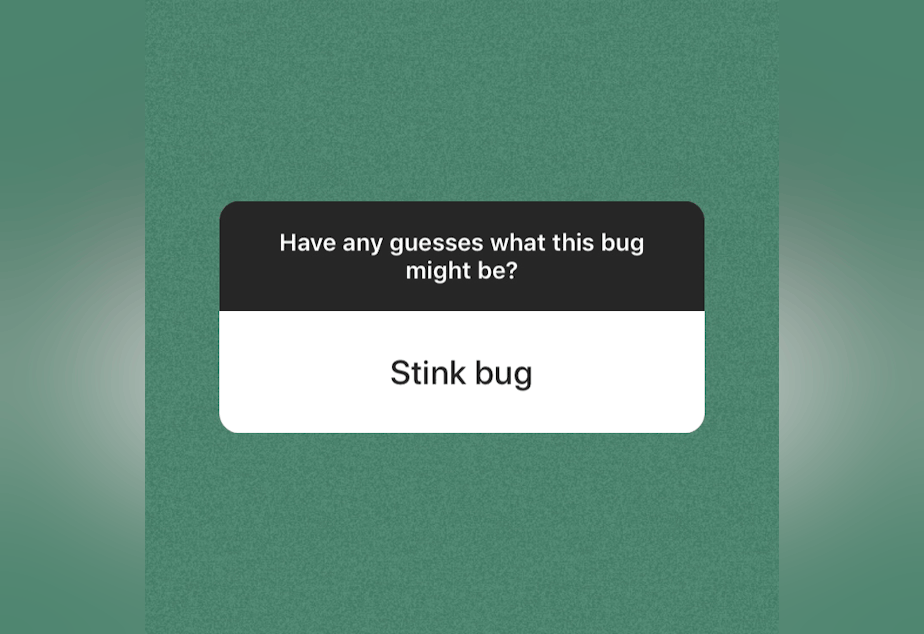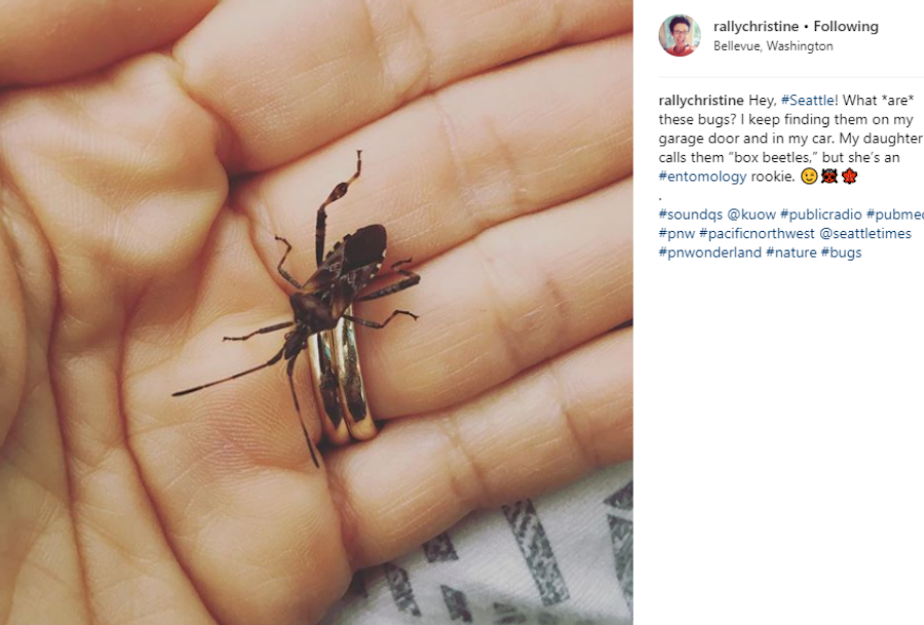What the heck is that bug? You gave us your best guesses

What the heck is that thing?
A listener sent us that question on Instagram:

So we looked to the rest of you for an answer. Here's what you said:
Sponsored
Then we turned to the experts: Rod Crawford at the University of Washington's Burke Museum and David Crowder, an entomologist at Washington State University.
Their opinion based on the photo: A western conifer seed bug, or WCSB for short.
Sponsored
Scientific name: Leptoglossus occidentalis.
"During the active season, these true-bugs feed on the seeds in Douglas-fir cones," Crawford wrote to SoundQs. "In fall they look for a place to hibernate. This often ends up being someone's home. They do no damage in the home, but it really isn't that good a place to hibernate."
A quick scan of the literature on the web shows that these insects are native to the American West, though they're found now in the eastern U.S. as well, and even as far away as Europe.
People have generically called them stink bugs. But don't you make the same mistake.
Sponsored
The western conifer seed bug can let off a foul odor when disturbed.
Both critters are from the true-bug order, Hemiptera.
But western conifer seed bugs are from the family Coreidae.
Which is a whole other ball of wax as real stink bugs, Pentatomidae.
So now you know.




